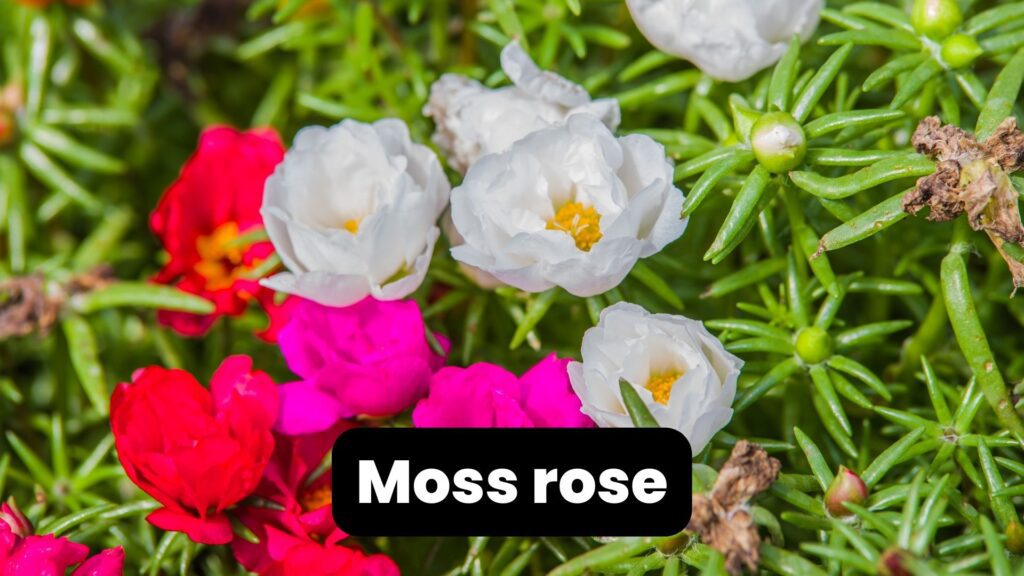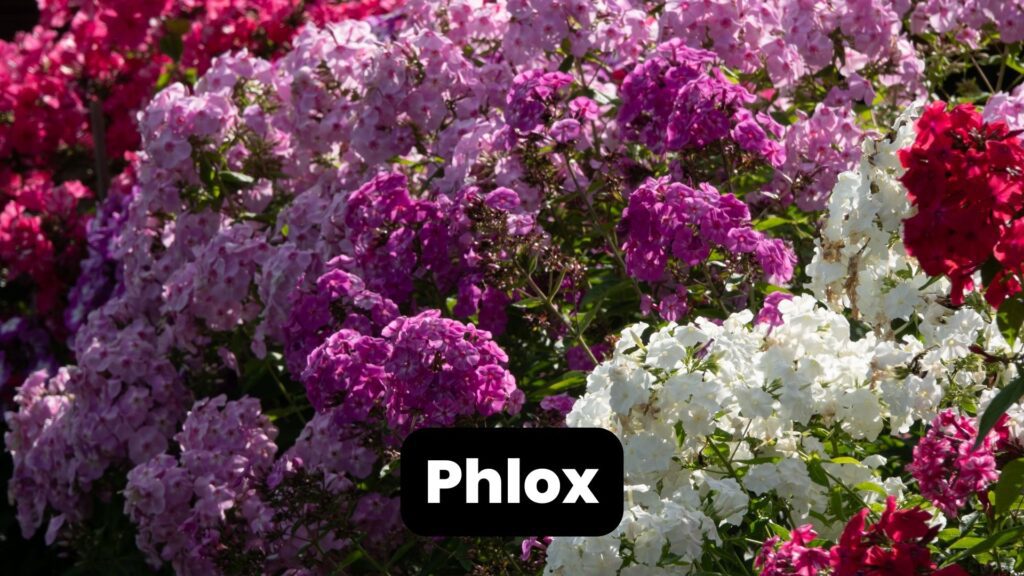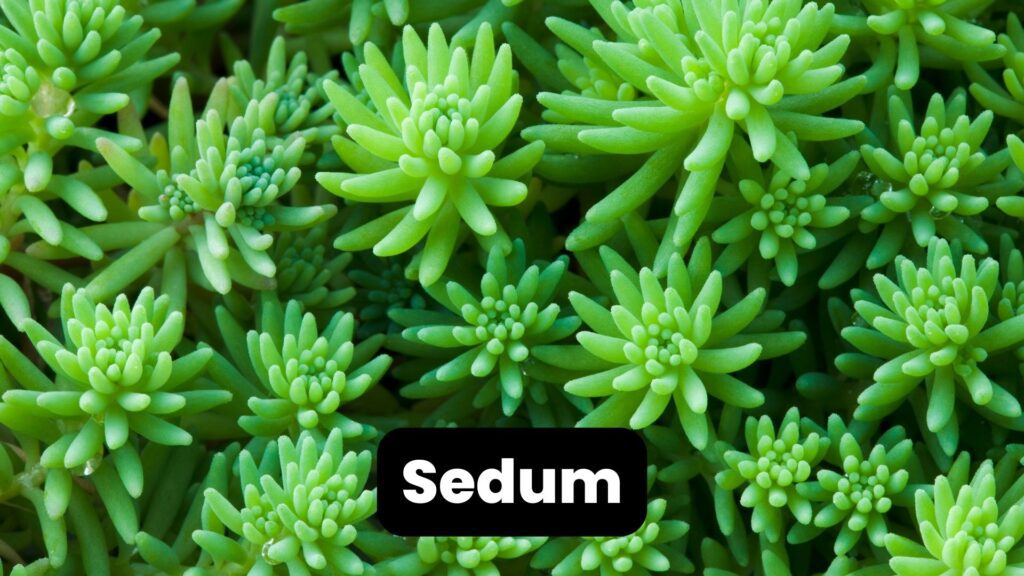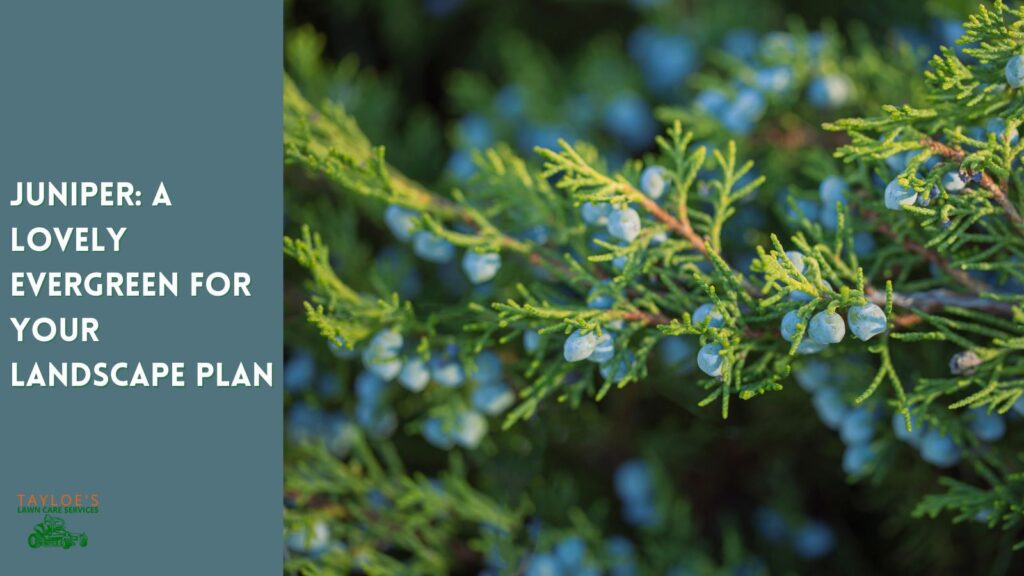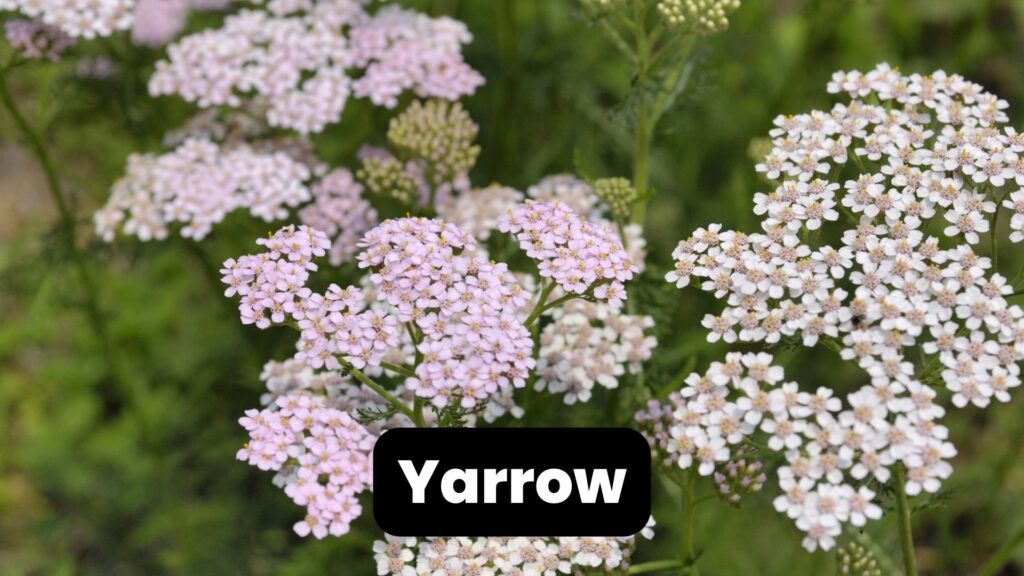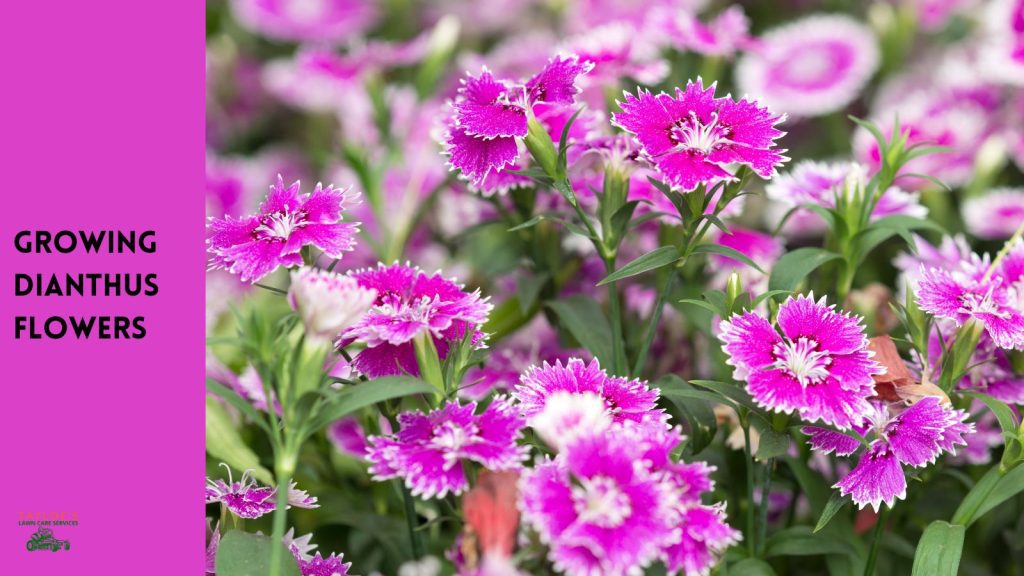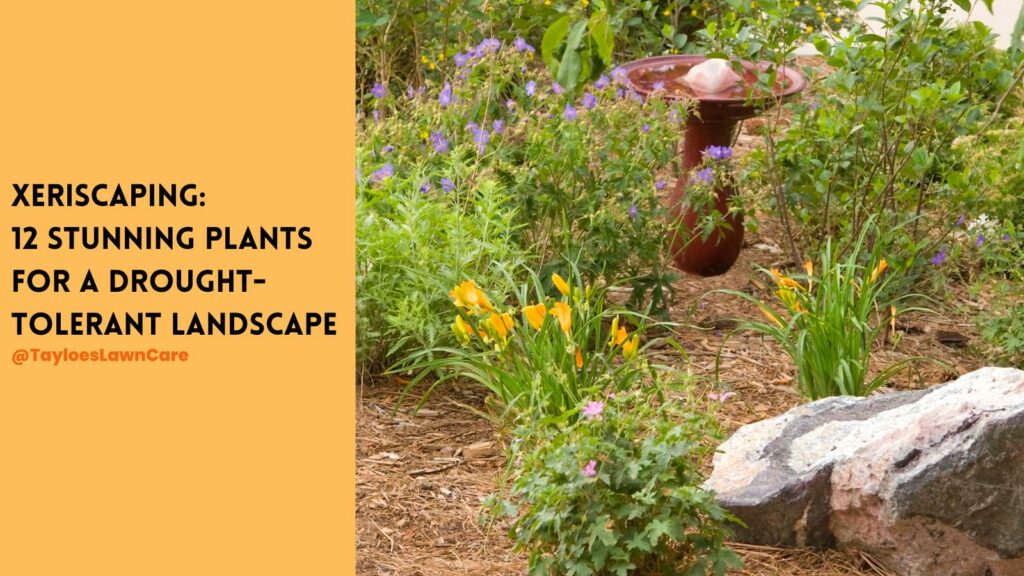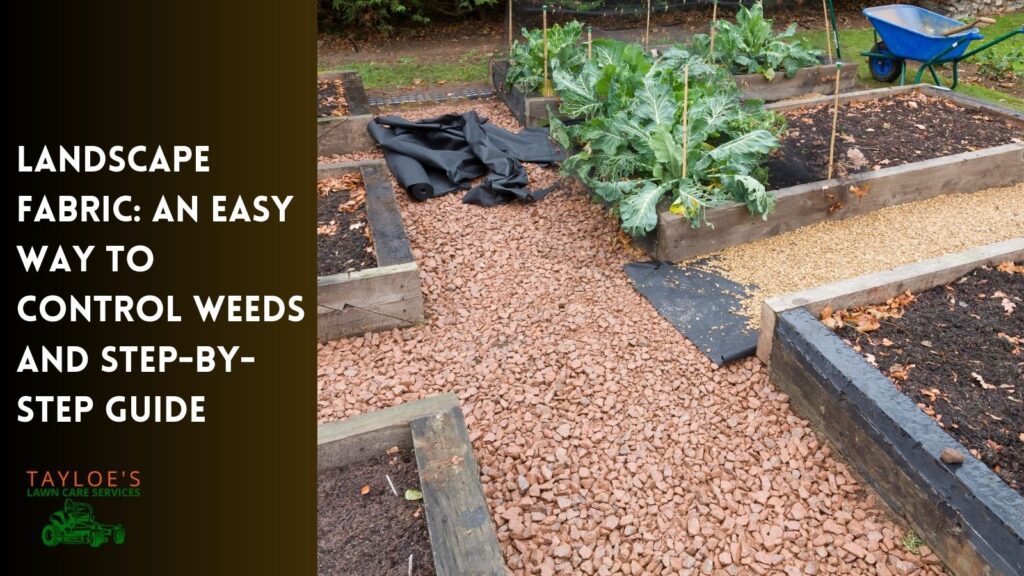Last Updated on: 12th December 2025, 12:40 pm
Try these hardy ground covers for beauty and ease of care.
Ground cover plants are not only famous for their aesthetic function in the landscaping space. They are also low on maintenance, so they’ve suddenly become the gardener’s love song.
These plants help control weeds, prevent soil erosion, and bring lively color and texture to a garden’s hard-to-reach areas.
You can use ground cover plants in shady areas under trees, steep banks or slopes, in very dry or wet locations, shady areas next to buildings, or areas where grass has failed to thrive.
They also make great underplantings in beds and shrub borders.
What Are Ground Cover Plants?
These are the low-growing ground cover plants that spread relatively fast and form a dense cover.
Decorative grass, like mondo grass, is one such example. Other ground covers can beat the odds to thrive even in the most unconducive environments but might grow more slowly (hens and chicks, for instance). For this article, I chose the best of both worlds.
Before Choosing the Best Ground Cover Plants…What’s Your USDA Growing Zone?
Before you decide on the best ground cover plants for your garden, you should know which growing zone you live in.
Due to the size of the country, the United States Department of Agriculture carved out specific regions. This zoning helps you predict what plants you can grow successfully. Click on the interactive map below to find your growing zone if you don’t already know it.
We tried to limit our suggestions to species that grew throughout most of the United States, except the hottest and coldest regions.
Fifteen Excellent Ground Cover Plants
Below, you will find fifteen hardy ground cover plants you can start growing today and tender with little to zero effort. Some of these are actual ground cover plants; others are fast-growing species that will help you fill in an empty garden quickly and with little effort, trimming them to stay lower to the earth.
1 – Ajuga (Ajuga reptans) – an early blooming ground cover
Also known as the bugleweed, Ajuga reptans is an herbaceous perennial ground cover native to North America.
The plant grows and spreads quickly through its underground runners known as stolons.
It has shiny dark green foliage and blooms in mid to late spring—putting forth purple, violet, or blue flower spikes.
Ajuga reptans make excellent ground filler plants, especially in shady areas where it may be impossible to grow lawns.
Plant it on banks, slopes, or around shrubs and trees—it will thrive and even do the noble task of choking out weeds. However, you don’t want the plant near your lawn because it can quickly take over the turfgrass.
Ajuga (Ajuga reptans) Growing and Care Needs
Here are tips for cultivating bugleweed.
Soil
- Ajuga reptans love well-drained soil with moderate moisture, though they can tolerate moderately dry soil. Plus, the soil should be adequately rich in organic material.
Sun Exposure
- This plant thrives in full sun but can withstand a little shade. However, the foliage will not be as dark green as when it is fully exposed.
Water
- Irrigate your Ajuga reptans weekly post-planting and reduce the frequency to once every two weeks when fully established.
- Avoid overwatering as it may lead to mold growth and rot. Only water when the top layer of the soil (1-2 inches) appears dry.
- Sweltering and humid temperatures also pose a rot risk to the crown and ensure the plant is adequately ventilated.
Propagation
- You can either choose to grow it from seed or through propagation.
- Propagation is best done in the fall or spring when there is no danger of frost.
- Ajuga spreads by underground runners—forming clumps that surround the parent plant. Look for that spot where the clumps appear crowded and dig them up, or simply dig up the entire plant, separate them, and then transplant them individually.
- If growing from seeds, you may want to initiate the process indoors using a seed-starter mix. Ensure you use a thin layer of compost to cover the seeds.
- Once they sprout (usually within a month), good enough, transfer them into larger pots until they’re ready to go into the garden.
2 – Portulaca (Portulaca grandiflora)
Portulaca grandiflora, or the moss rose, is a popular flowering annual with not-so-aggressive spread behavior. Thus, although they make lovely ground cover plants, they may take a while to complete their lovely job.
The plant grows to a height of 3-9 inches and spreads, creating a dense mat suitable for any garden.
With its beautiful, brightly colored flowers that come in shades of orange, yellow, white, pink, and red colors, you can’t go wrong with having it in your container garden, in hanging baskets, as an edging along your paved walkways, along garden bed boarders’ front edge, or on rock gardens…
However, you want to be extra careful because the soluble calcium oxalates in these plants are toxic to animals (like dogs, cats, and horses) if ingested in large amounts.
Poisoning symptoms include trouble swallowing, diarrhea, muscle weakness, and tremors.
Portulaca plants are quite resistant to drought and will thrive even in the poorest of soils where you don’t expect other plants to survive.
They hardly require maintenance. The plants go through the entire blooming process (usually from early summer to frost) without deadheading.
But of course, you can trim the plants to renew their vigor, especially if you notice them become lanky. Do that in mid-late summer.
Portulaca grandiflora Growing and Care Needs
Interested in growing Portulaca? Here’s some advice.
Soil
- These plants thrive in well-drained sandy or rocky soil with dry to medium moisture levels.
- If you have clay or poorly draining soil, you may want to grow the plants in containers to avoid the hassle of improving the entire garden’s soil.
Sun exposure
- At least 6-8 hours a day, full sun greatly boost plants’ blooming process.
- A shade is a huge setback to this crucial process. The blooms won’t completely open under shade, at night, or during cloudy days.
Water
- Portulaca will somewhat tolerate soil dryness but will require a moisture boost to bloom best.
- And so consider watering in dry spells. However, ensure you don’t overwater, which may kill the plants.
Growing portulaca from seed
- Directly plant the seeds into the garden (after the last frost) or start them indoors 6-8 weeks just before your area’s projected last frost date.
- Ensure the soil is moist and the seeds are not completely covered. They require light to germinate.
- Maintain slight moisture levels and only water the seedlings when the topsoil feels dry.
- USDA Growing zone: 2-11.
3 – Phlox (Phlox stolonifera) – one of the more colorful ground cover plants
There are three types of phlox—creeping, garden, and woodland phlox.
Both the garden and woodland types are perfect for a colorful backdrop. However, the creeping phlox works best for excellent ground cover.
The low-growing plant (creeping phlox) is famous for its carpeting nature and strong, colorful blooms, which appear in late spring and last until early summer.
It will likely stay green for most of the year, even after blooming, before succumbing to the winter cold.
Hillslopes, crevices of stone walls, and rock gardens are the most common habitats of creeping phlox.
The plant grows moderately, so you can easily keep up with it and manage its spread. It’s very low on maintenance.
Creeping phlox (Phlox stolonifera) Growing and Care Needs
Soil
- Creeping phlox thrives best in well-drained, organic matter-rich loamy soil with a slightly acidic pH. However, it can still tolerate slightly alkaline and neutral soil.
Sun Exposure
- Full sun or partial shade is okay. Excessive shading can lead to poor blooms.
Water
- Generally, creeping phlox is drought-tolerant, especially the mature type.
- However, during the summer, you may want to give it a weekly sip of water to keep the soil moderately moist.
Propagation
- Propagation is easier done through stem cuttings, division, or rooted stems.
- Cuttings tend to root easily (within a few months, if done right), putting forth new plants almost effortlessly.
- Simply cut roughly a 6-inch long section from a lateral shoot next to the tip, ensuring the cutting has at least one leaf—with no flowers.
- Place the cuttings in a well-draining potting mix; use coarse sand, peat, or perlite.
- Note: Take the cuttings in summer or fall, although they root best when planted in autumn.
Pruning
- Pruning is optional.
- USDA Growing Zones: 3-9
4 – Sedum (Sedum spp)
Sedum (stonecrop) is an easy-to-grow perennial ground cover plant with fleshy stems with succulent leaves and star-shaped flowers ranging from pink, white, and yellow to red.
The garden has two main categories of sedums: creeping and tall.
Creeping/low-growing sedums (such as Sedum tetractinum, Sedum ternatum, and many others) feature long, narrow stems that develop and spread along the ground—often a few inches tall—forming colorful mats of fleshy foliage…
…Therefore, a good ground cover plant choice for rock gardens, path edges, and stone walls.
Tall/upright sedums (mainly Sedum telephium and Sedum spectabile) feature tall upright stems that often grow 1 to 3 feet tall and produce a compact mass of tiny flowers.
In addition to the colorful flowers, some tall sedums grow colorful leaves in shades of dark purple, copper, and dusky mauve.
Sedum Growing and Care Needs
Here are some things to consider about planting sedum.
Soil
- Generally, Sedum thrives in well-draining, NOT overly-rich, sandy or loamy soil with varying pH values.
- You don’t want to overly-feed the soil, especially if planting the tall variety encourages leggy growth, leading to the heavy-head problem.
Sun Exposure
- Most sedum varieties thrive in full sun except for the creeping and vigorous species, which tolerate partial shade to some extent.
- If you reside in an area prone to long, cold winters, you want to have the plant in full sun for an enhanced overwintering ability.
Water
- These plants are quite hardy and won’t require much maintenance.
- Once established, regularly check to ensure the soil isn’t too dry, and water lightly if need be.
- Too much moisture (which partly is often the case with overwatering) exposes the plant to rot.
Propagation
- Creeping sedums are the easiest plants to propagate. Simply cut a few stems and stick them in the soil at a shallow depth.
- The tall sedums are best propagated via division. When planting, ensure the root ball’s top is on the same level as the surface. Place your plant in the hole, then fill it in.
Pruning
- Creeping sedums don’t necessarily require pruning unless they spread past their assigned area. The same goes for the tall sedums.
- However, you can tip-prune the tall variety in spring to help control its height, although this will delay the onset of the flowering process.
- USDA Growing zone: 3-10.
5 – Carpet juniper (Juniperus Sabina) – an evergreen ground cover
This low-growing light green-foliaged shrub grows 4 to 6 feet tall and spreads 5 to 10 feet wide with shelf-like branches. You can trim it low to encourage it to spread out instead of upwards.
The carpet juniper offers an extraordinarily captivating and refined texture to any landscape composition with its unique ground-hugging habit.
It’s relatively low maintenance and will look good even without pruning.
You can expect the plant’s scale-like leaves to stay lime-green throughout the winter without much stress.
Though the blooms aren’t always ornamentally significant, carpet juniper’s blueberries come forth from late spring to late in winter, enhancing further its aesthetic function.
Carpet Juniper Growing and Care Needs
Growing carpet juniper is as easy as it can be.
Soil
- This plant is not particular when it comes to soil type or pH and will thrive even in clay soils.
- All it needs is average, medium moisture, and well-draining soil.
Sun Exposure
- It’s a full sun lover.
Water
- Native to southern and central Europe, Carpet juniper will tolerate drought and, therefore, won’t require regular watering once established.
- In the early days post-planting, water is low to average—to maintain the right moisture level.
- Carpet juniper is intolerant of wet soils.
- Propagate by semi-hardwood cuttings.
- USDA Growing zones: 4-7.
6 – Bunchberry (Cornus canadensis)
Bunchberry is a shade-lover, mostly preferring its native wooded habitat—the cool climate of the upper-south to tje Northern United States, up through to Canada, and reaching over to northeastern Asia.
This rhizomatous herbaceous perennial stays relatively low and blooms from May to July—putting forth white flowers.
It’s resistant to damage by rabbits and deer. However, it attracts beneficial insects like butterflies.
You may want to consider planting bunchberry in your shady woodland garden, especially if you live far north, where plant choices are limited due to the wet soil.
Bunchberry Growing and Care Needs
Here are all the things you should know about bunchberry success.
Soil
- Bunchberry thrives in moist, acidic, and well-drained soil—rich in organic matter.
- If possible, amend the soil (when planting) with compost, coconut coir, or peat moss.
- Also, remember to top-dress the soil with 1 ½ -2 inches of organic material just after the shrub’s foliage dies in early winter. This is especially true if your soil has a high clay content.
Sun Exposure
- Grow bunchberry in a full or partly shaded-location, making sure not to expose it to the afternoon sun—which can easily dry up the plant.
Mulch
- Use light organic mulch like shredded wood, pine needles, or cocoa hulls.
- Spread it 1 ½ -3 inches deep around the plant to help control weeds and moisten the soil.
- Bunchberry requires no pruning. Therefore, after planting, you must only keep it watered, especially in hot weather, and enjoy its beauty from spring to fall.
- USDA Growing zones: 2-7
7 – Evergreen candytuft (Iberis sempervirens)
- Iberis sempervirens is a perennial flower native to Southwest Asia and Southern Europe.
- The plant grows to 12 to 18 inches and blooms in April or May, brightening up gardens with numerous showy white or pink blooms.
- Candytuft exhibits a slow growth rate but stays around for years.
- Plant it in early fall with a spacing of about 6 inches—in moist soil—and notice how quickly it fills in.
Evergreen Candytuft Growing and Care Needs
Soil
- This perennial thrives in well-draining, gravelly soil with an alkaline pH.
Sun Exposure
- Candytuft blooms best in full sun. However, it can tolerate some shade.
- It benefits greatly from afternoon shade, in scorching climates, or during summer.
Water
- Once established, these flowers are quite drought-tolerant. Consider watering the young plants during dry seasons to boost growth.
Propagation
- Candytuft can be propagated by root division or through cuttings.
- Select a moderately long green, healthy stem if propagating through cuttings.
- Fall is the best time for root division. Just ensure you do it before the plants begin their winter dormancy.
Pruning
- To keep the plant in shape and encourage new growth, prune after blooming. Simply cut back a third of the top foliage.
- Pruning also helps prevent the plants from becoming leggy.
- USDA Growing Zones: 4-8.
8 – Yarrow (Achillea millefolium) – a ground cover highly attractive to pollinators
This flowering perennial is a lovely addition to any yard and comes with little to zero care needs.
In addition to its aesthetic function, Yarrow is also grown as an herb and used to manage fever, bleeding from minor wounds, and muscle relaxation.
The plant grows 2 to 3 feet tall and spreads 2 to 3 feet wide, putting forth white and yellow blooms from June to September.
Grown under the right conditions, the plant can be quite invasive, implying that you’ll have to control it.
The easiest way to manage the plant’s aggressive growth is to refrain from additional fertilizer feeding because too many nutrients fuel the aggressiveness.
Yarrow Growing and Care Needs
In addition to being a nice ground cover, yarrow helps you attract pollinators like bees and butterflies!.
Soil
- Yarrow thrives in a wide range of soils, including nutrient-poor dry soil. However, it grows best in well-draining, dry to medium soils with a pH of 4-8.
Sun Exposure
- This plant prefers full sun but can tolerate partial shade.
Water
- Though drought-tolerant, you may need to water your Yarrow plants in the dry seasons to boost growth.
- Also, consider giving the plants an extra sip if your location receives less than an inch of rain a week.
Propagation
- In most cases, you’ll buy Yarrow as a plant, so loosen the soil 13-15 inches deep before planting it in your garden, then mix in 3 to 4 inches of compost.
- Yarrows don’t have problems spreading or establishing themselves, so leaving 1-2 feet between the plants will do.
Growing Yarrow from seeds
- Start the seeds indoors 42 to 56 days before the last expected frost. Use normal potting soil and place the plant in a sunny location with adequate warmth. The seeds should germinate within 14-21 days.
Pruning
- Prune regularly to encourage blooming and to also prevent flopping.
- In a hot, humid climate, Yarrow stems tend to flop, so cutting the stems back in late spring (just before blooming) will help manage the plant’s height, therefore curbing the flopping.
- Pruning is also a great way to manage the plant’s aggressive growth.
Pests and diseases
- Generally, Yarrow plants don’t require much care, but you may have to look for things like powdery mildew and mold—often manifest as whitish powder on the leaves—and treat them with the appropriate fungicide.
- Yarrow USDA Growing zones: 3-9.
9 – Liriope (Liriope muscari)
Liriope muscari and its sister Liriope spicate are the most popular varieties of Liriope grown in the United States. Liriope is tough, drought-tolerant, and generally a low-maintenance plant, partly because they are popular in landscaping.
They make good ground cover plants; you can use them for edging, managing weeds, and preventing soil erosion. Some may mistake them for the normal grass. However, these plants belong to the asparagus family. They’re herbaceous perennials that bloom in August and September. The tag might say monkey grass if you look for them at the garden center.
Liriope Growing and Care Needs
Here are the best tips for success with Liriope.
Soil
- Liriope will thrive in almost all soil types and conditions but won’t tolerate a soggy environment.
- Ensure the soil is well-draining.
Sun Exposure
- Liriope will still thrive in full sun or a partly shaded area.
- If you reside in a warm climate, consider offering some shade in the afternoon to keep them rejuvenated.
Water
- Once established, liriope plants don’t necessarily require watering unless in arid weather.
- Irrigate the plants regularly in the initial days after planting to enhance the establishment process.
- Note: Do not overwater since soggy soils can easily lead to root rot.
Propagation
- Liriope spreads through rhizomes, meaning you can easily train or cut them for re-planting.
- Simply dig up some of their foliage with attached roots, then transplant in a new area.
Pruning
- Because it’s an aggressive grower, you may need to cut the foliage back onto the ground to maintain the plant in good shape.
- Do this in early spring before the onset of new growth OR during the late winter.
- USDA Growing zones: 4-10.
10 – Creeping Thyme (Thymus serpyllum)
The creeping thyme, commonly referred to as the “mother of thyme,” is probably one of the best ground cover plant choices for a flowerbed, especially for the sunny areas of a garden.
It’s short and stocky, therefore able to adequately offer landscaping aesthetics often delivered by grass.
In addition to its sweet fragrance, which often peaks during blooming (late spring to early summer), the plant helps suppress invasive weeds keeping your beds free from weed growth—though it may not be edible like the common thyme.
There are several varieties of creeping thyme, such as English thyme, purple carpet, spicy orange, and pink chintz.
For ground cover plants, we focus on the fast-spreading red creeping thyme (Thymus serpyllum). Here is how to grow and care for it.
Note: Red creeping thyme spreads fast, but it is not invasive. It’s just a fast grower (up to 18 inches in diameter) and puts forth beautiful pink flowers and soft leaves you can walk on.
Red creeping thyme (Thymus serpyllum) Growing and Care Needs
Red creeping thyme is almost carefree.
Soil
- Thyme doesn’t like wet feet. Therefore, ensure the soil is well-draining, especially if you use loamy soil.
- But generally, the plant thrives in almost all soil types. The secret is excellent drainage.
- Feed the soil with organic matter early enough so you don’t have to worry about fertilizing later.
Sun Exposure
- It enjoys full sun.
Water
- Once established, thyme is reliably drought-tolerant; however, it needs water when the plants are just starting to moisten the soil (not over-moist).
- Too much moisture can lead to root rot.
Thyme and humidity
- These plants don’t like humidity. In most cases, it will affect their leaves.
- If you reside in a humid location and notice the foliage looking rough or the leaves coming off, consider trimming off the affected stems. Also, try to enhance air circulation.
- The affected plants often return to life when the weather becomes cooler and drier.
- USDA Growing zone: 4 through 9.
11 – Lily of the Valley (Convallaria majalis)
Though its foliage looks more like most lilies, the lily of the Valley isn’t a true lily; but a fast-growing hardy ground cover plant that spreads quickly.
Fall is usually its best planting time.
The Lily of the Valley plant features moderately green leaves with petite, fragrant, white flowers that appear in the spring and orange-red berries later in the fall. By the way, the fragrance of these tiny blooms is intoxicating!
The whole plant is highly toxic to animals and people when ingested.
Handling it in the garden won’t harm your skin unless it’s sensitive. However, you should thoroughly clean your hands before eating or handling food.
Lily of the Valley Growing and Care Needs
Not only does the lily of the valley look pretty, but it also promotes healthy bees.
Soil
- Though it thrives in most soil types, the lily of the valley specifically loves well-drained, organic matter-rich soil with acidic to neutral pH levels.
- But slightly alkaline soil will still do.
Sun Exposure
- Partial sun is excellent. However, it won’t complain even under full shade.
- Most gardeners prefer growing the lily of the valley under trees (shady areas) where other plants won’t grow.
- It’s naturally a vigorous grower and will spread quickly to surpass its allocated territory, so you must watch it and manage it as early as possible.
Water
- This plant doesn’t like soggy soil. Irrigate only when the soil begins to dry out, as the goal is consistently moist soil.
- That way, growth and flowering are enhanced.
- Once established, no much care is needed, except for regular watering during dry spells.
- You can dig up the old plants (once flowering slows down), divide, and replant them in different locations for excellent spacing, enhancing good air circulation.
- Lily of the Valley is quite resistant to pests and diseases and has a long life span.
- USDA Growing zone: 3-8.
12 – Hens and Chicks (Sempervivum tectorum)
This easy-to-grow ground cover plant (a member of the Sempervivum class of succulent plants) will survive anywhere, even in the poorest soils with unwelcoming weather conditions.
The plant (mother plant) usually produces small plants (baby plants) around it, hence the name ‘hens and chicks. All share a strong bond via an underground runner.
Though mostly grown for their unique shape and succulent leaves, hens and chicks flower in mid to late summer.
Interestingly, blooming signals the beginning of a new life cycle in the plant, but it may also imply its demise.
As the old plant wears off, the new seeds it produces as its flowers give birth to a new generation of captivating succulents.
Hens and Chicks Growing and Care Needs
These grow slowly, but they are well worth the wait. Plus, it’s fun to watch their progress over time.
Soil
- This plant prefers sandy soil but can thrive in other soils with excellent drainage.
- The soil pH should be neutral, about 6.6-7.5.
- Add compost, vermiculite, or gravel to your soil to enhance drainage.
- Hens and chicks will do just well with very little soil, which is why they survive even in cracks in rock walls.
Sun Exposure
- It will do perfectly well in full or partial sun and shine its bright color just good enough.
- However, when grown under full shade, most varieties will tone down to a plain green pigment.
- Consider offering the plants some shade in the afternoon—in the heat of summer or if you reside in the Southern USA. It will help sustain the beautiful plant color.
Water
- The Hens and Chicks plant needs only very little water as a succulent.
- However, ensure you water generously immediately after transplanting and allow the soil to dry out before the next watering.
- You may want to increase your watering frequency again in the summer, especially if you reside in an extremely hot climate, but ensure you don’t overwater. Doing so may easily kill the plant.
- If you notice the plant beginning to struggle, reduce the watering while ensuring the soil drainage is perfect.
Propagation
- Hens and chicks plants are remarkable for producing young offshoots and quickly adapting to changes, simplifying the entire propagation process.
- Simply divide the plant anytime in the spring or summer growing season, then re-plant elsewhere in the garden.
- Generally, sempervivums require very little care and will live for 4 to 6 years. Make sure to separate the chicks (baby plants) from the hen (mother plant) every two years to curb overcrowding.
- USDA Growing Zone: 3-8.
13 – Lavender (Lavandula officinalis) – edible ground cover
It’s now known as Lavandula angustifolia, but it is sometimes referred to as true lavender, English lavender, or simply lavender.
The flowering plant is native to the Mediterranean and belongs to the Lamiaceae family.
Though often considered an herb, Lavandula angustifolia is an herbaceous perennial with a semi-woody growth habit. It serves well as a ground cover plant.
Its vibrant purple flowers will brighten your garden in late spring and early summer.
Start your lavender from small plants (as opposed to seeds), especially if you don’t have the time and patience. This is because the plant takes quite a long time to germinate—up to a month.
Plant in the Spring—when the weather isn’t too hot—to aid the establishment process.
The cool weather will also help minimize transplant shock.
Lavender Growing and Care Needs
Grow lavender for its beauty, then harvest it for culinary use.
Soil
- Lavender thrives in nutrient-poor, relatively sandy soils, which must be well-draining to avoid root rot.
- If you decide to mulch, consider using gravel instead of organic mulch. Organic mulches will put your lavender at risk of infecting fungus and mold.
Sun Exposure
- Grow lavender in full sun to enhance growth and blooming.
- If you reside in a very hot climate, consider offering shade in the afternoon. Also, ensure proper ventilation to curb humidity problems.
Water
- Lavender is drought-tolerant. Therefore, it won’t require regular watering once established.
- Irrigate 1 to 2 times a week after planting until the plants are established; from there, only water when necessary while ensuring not to keep their feet wet.
Propagation
- Propagate lavender through stem cuttings.
- Cut the shoots 6 inches long, then strip away the lower leaves.
- Place the cut ends in the rooting hormone to help enhance the rooting process.
- Fill your growing pot with sand or potting soil, then plant the cuttings/shoots therein.
- Be sure to put the cuttings in a partly shaded area, irrigating frequently until they’re established.
- Ensure a spacing of 1 to 3 feet.
Pruning
- Lavender requires pruning to keep it compact and attractive and promote new growth.
- Trim annually in late summer, immediately after flowering is done.
- Remove the spent flower stalks and a bit of the leaf growth.
- You can clip over the foliage in spring if the growth is untidy or damaged by frost.
- Lavender won’t easily break new growth from old stems, so, refrain from cutting back the plant into the woody stems.
- USDA Growing Zones: 5-8.
14 – Mondo Grass (Ophiopogon japonicus)
Mondo grass is an evergreen perennial native to Asia.
It’s strong and hardy and withstand varied weather conditions, soil types, and pests like deer.
Though quite drought-resistant, mondo grass will easily die with inadequate moisture.
If you’re lucky enough to reside in a naturally moisture-rich area, you may decide to plant it, and once established, simply let it alone without care. Your mondo will still thrive just as well.
There are several species of mondo grass. However, Ophiopogon japonicas are the most common and widely grown in most American gardens.
The low-growing ground cover plant grows only 6 to10 inches high and spreads (through stolons) up to 15 inches wide, forming a tough, durable, and compact carpet of green foliage, perfect for enhancing the texture of any garden.
For centuries, mondo grass has been used as a ground cover, with some gardeners opting to utilize it in geometric layouts popular with contemporary gardens.
Generally, mondo grass can be used for edging, beds, borders, underplanting shrubs and groundcovers, coastal gardens, city gardens, Mediterranean gardens, or gravel gardens.
Mondo Grass Growing and Care Needs
The plant is straightforward to grow and care for, requiring almost zero maintenance.
If you are currently operating with water restrictions and/or have some hard-to-reach areas in your garden you want to fill up, this would be a perfect plant choice.
Soil
- Grow it in well-drained loamy, clay, or sandy soil with medium moisture.
Sun Exposure
- Mondo grass thrives in full to partial sun.
Water
- This plant doesn’t like staying wet. However, it will appreciate just enough moisture. Therefore, water occasionally, especially during hot weather, helps maintain the ideal moisture levels to keep the plant in shape.
- As you water, be sure to pull out any weeds. Pull up the grass after 2 to 3 years, then divide the root clumps.
Propagation
- You can grow mondo grass from seeds or use starter plants that have already grown root systems.
- Consider planting in early spring after the last frost OR wait until later in the growing season—as long as the grass has adequate time to develop a robust root system.
- You can plant your mondo grass under a shade; however, if you decide to plant in a sunny location, water thoroughly to minimize transplant shock.
- Add compost to help fuel growth. After it’s established, mondo grass won’t need further fertilizer feeding.
- Because it grows slowly, you can quickly reroute and train the plant in your desired direction.
- USDA Growing zones: 7 to 11.
15 – Dianthus (Caryophyllaceae)
Also known as ‘pinks,’ dianthus is loved for its grass-like blue-green leaves and the numerous starry flowers that often grace the air with their fragrance in the spring and late summer to fall.
These perennials come in different sizes and shapes, including tiny varieties that form tight little lumps of leaves and flowers, AND the giant species that grow up to 91 cm tall with almost zero basal foliage.
No matter the variety you choose to grow, removing the spent blooms is crucial to encourage even more blooming rather than seeding. This makes the ground cover plants cover more space per plant, giving a grand illusion.
As dianthus grows, you may notice dead spots within the foliage center.
In such a case, consider dividing the plant and then re-planting it to spur new growth.
Dianthus Growing and Care Needs
This flower attracts butterflies to your yard.
Soil
- Dianthus plants thrive best in rich, well-draining soils with neutral to slightly alkaline pH levels…
- Therefore, too much moisture (at the base of the plant) resulting from poor soil drainage or putting mulch too close to the plant base can easily lead to rot.
Sun Exposure
- This plant thrives in full sun. Too much shade may lead to rotting, especially for the mat-forming dianthus.
Water
- Weekly irrigation (with an inch of water) should suffice for your dianthus flowers.
- Do not water-log the soil, as that may lead to root rot.
Propagation
- Generally, dianthus plants have a short life span. And so save the seeds from sowing the following season.
Pruning
- After the first bloom, cut back the Dianthus plant to encourage a second bloom early in the fall or later in the summer.
- USDA Growing Zones: 3 through 9.
Related Reading:

The Bottom Line on Choosing Ground Cover Plants for Your Garden
When choosing ground covers, pay attention to the plants’ needs—soil type, sunlight exposure, water needs, propagation, and pruning needs.
While most ground cover plants won’t require fertilizer, a few will appreciate a light feeding once a year. Before taking action, check out the information on the growers’ tag or seed packet that comes with most ground cover plants.
Need help with taking care of your lawn and garden needs? Connect with Tayloe’s Lawn Care Services – 252.287.3376. We can provide a free consultation and a no-hassle estimate.
Author Profile

- Maureen Abuor
- Maureen Abuor is a professional content marketing strategist and SEO strategist, with particular knowlege of creating landscaping and gardening content that informs and delights her audience. When she's not working, she's a busy mother of three precious little ones and child of God.
Latest entries
 Lawn CareApril 29, 2025Best shady area grass seed for Eastern NC
Lawn CareApril 29, 2025Best shady area grass seed for Eastern NC GardeningApril 15, 2025How do I make organic soil for the garden?
GardeningApril 15, 2025How do I make organic soil for the garden? Flower GardenMarch 7, 2025What are wave petunias?
Flower GardenMarch 7, 2025What are wave petunias? Flower GardenMarch 3, 202520 Full-sun annuals for your spring and summer garden
Flower GardenMarch 3, 202520 Full-sun annuals for your spring and summer garden

